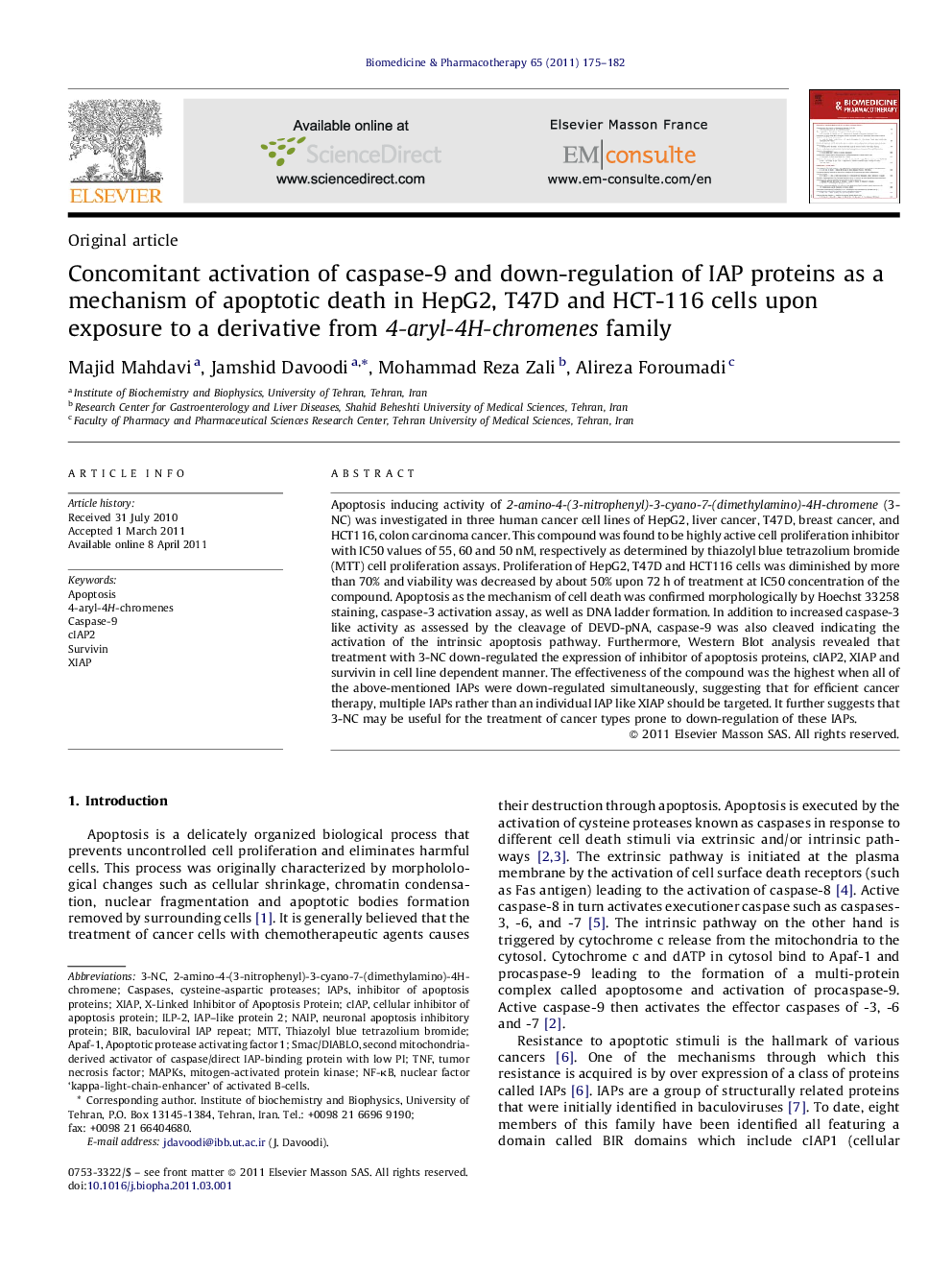| Article ID | Journal | Published Year | Pages | File Type |
|---|---|---|---|---|
| 2524733 | Biomedicine & Pharmacotherapy | 2011 | 8 Pages |
Apoptosis inducing activity of 2-amino-4-(3-nitrophenyl)-3-cyano-7-(dimethylamino)-4H-chromene (3-NC) was investigated in three human cancer cell lines of HepG2, liver cancer, T47D, breast cancer, and HCT116, colon carcinoma cancer. This compound was found to be highly active cell proliferation inhibitor with IC50 values of 55, 60 and 50 nM, respectively as determined by thiazolyl blue tetrazolium bromide (MTT) cell proliferation assays. Proliferation of HepG2, T47D and HCT116 cells was diminished by more than 70% and viability was decreased by about 50% upon 72 h of treatment at IC50 concentration of the compound. Apoptosis as the mechanism of cell death was confirmed morphologically by Hoechst 33258 staining, caspase-3 activation assay, as well as DNA ladder formation. In addition to increased caspase-3 like activity as assessed by the cleavage of DEVD-pNA, caspase-9 was also cleaved indicating the activation of the intrinsic apoptosis pathway. Furthermore, Western Blot analysis revealed that treatment with 3-NC down-regulated the expression of inhibitor of apoptosis proteins, cIAP2, XIAP and survivin in cell line dependent manner. The effectiveness of the compound was the highest when all of the above-mentioned IAPs were down-regulated simultaneously, suggesting that for efficient cancer therapy, multiple IAPs rather than an individual IAP like XIAP should be targeted. It further suggests that 3-NC may be useful for the treatment of cancer types prone to down-regulation of these IAPs.
